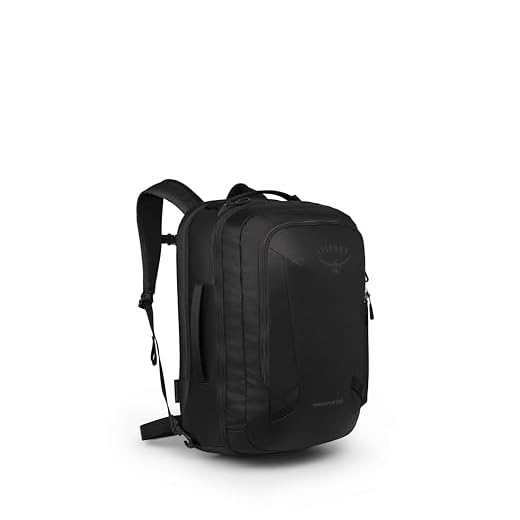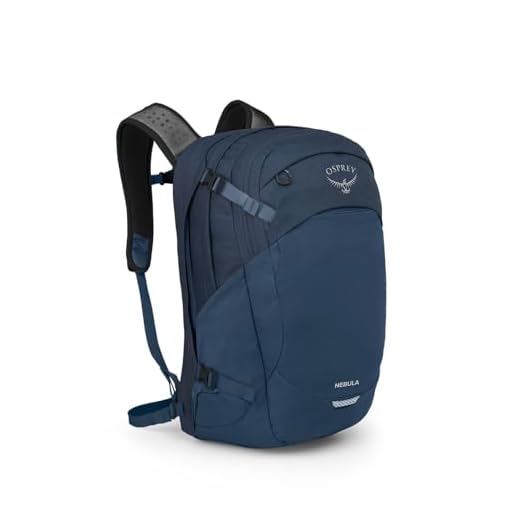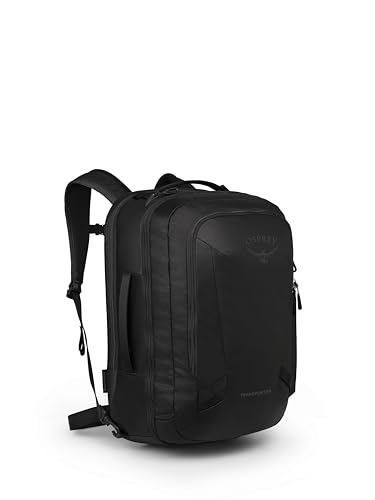

Recommendation: Choose units manufactured in Vietnam or the Philippines and purchase from the brand’s official store or authorised dealers to guarantee genuine construction and warranty support.
Headquarters located in Cortez, Colorado; company founded in 1974 by Mike Pfotenhauer. Manufacturing partners concentrated in Vietnam and the Philippines, with some runs produced in China. The label offers a lifetime repair policy called the All Mighty Guarantee, serviced through US customer support for registered items.
How to verify origin and authenticity: inspect the internal country-of-origin label inside the main compartment, note the serial/model code, and compare UPC/barcode data with the retailer listing. Request close-up photos from third-party sellers showing stitching, zipper branding (commonly YKK), and hardware markings (ITW/Duraflex). Register the product on the brand website to activate warranty and record production details.
Production focus varies by factory: Vietnam and Philippines lines typically handle heavy-load hiking rucksacks and technical packs; China commonly handles urban/daypack models and accessories. Expect small workmanship variance between facilities; check critical load points (bar-tacks), stitching density (stitches per inch), frame-sheet fit, and foam lumbar shaping when inspecting a unit.
Practical buying tips: prefer stock with a clear country label and matching UPC, avoid listings with generic photos or unusually low prices, and keep proof of purchase for warranty claims. For discontinued or vintage models, contact the brand with the serial number to confirm origin and available repair options.
Production Locations for This Brand’s Packs
Check the sewn country label first – most models list Vietnam, China, or the Philippines as production locations; a small portion originates from Bangladesh or Cambodia depending on model and season.
Design and testing occur in U.S. offices while assembly concentrates in Southeast Asian facilities; specific factory names and city data vary by SKU, so confirm per-item information before purchase.
Quick verification steps
Inspect the interior label: look for a country-of-origin tag and any factory code printed on the fabric label or care tag.
Visit the official product page: technical specifications frequently include country details and occasional production notes for that SKU.
Contact customer support with SKU and serial (if present): request the production country, production date, and any available audit or certification documents tied to that unit.
Ask sellers for a clear photo of the interior label when shopping secondhand or via marketplace listings to confirm authenticity and origin prior to payment.
Practical buying recommendations
Prefer authorized dealers or the brand’s online store to reduce risk of grey-market units with altered labels or missing warranty support.
If sourcing decisions depend on labor or chemical standards, request factory audit reports and certifications such as bluesign, ISO, BSCI, SA8000, WRAP, or REACH compliance before committing to bulk orders.
Use the manufacturer’s lifetime repair warranty for service requests; warranty teams can advise on repair centers and repair logistics regardless of assembly location.
Current production countries for the brand’s packs
Recommendation: Prioritize units produced in Vietnam or the Philippines for consistent manufacturing standards and established warranty support.
Primary production locations include Vietnam, the Philippines, China, Laos and Cambodia. Vietnam handles the largest volume, including high-performance trekking and travel models; the Philippines supplies many daypack and travel variants; China handles selected lines and component assembly; Laos and Cambodia support smaller runs, cut‑and‑sew operations and trim work.
To confirm country of origin inspect the sewn-in origin tag inside the main compartment or beneath the hipbelt; the retail box and hangtag frequently state origin as well. Record the interior model code and serial number – customer support can verify production site when provided those details.
Key components come from specialized suppliers: YKK zippers, ITW/Nexus buckles and foams sourced from multiple vendors. Assemblies in one country commonly incorporate parts from several others, so assembly location does not fully reflect component provenance.
If origin influences purchase decisions request a clear photo of the interior origin tag before buying, purchase through an authorized dealer or the official web store, and register the product after purchase to ensure full warranty handling.
How to read the country-of-origin label on a pack from the brand
Check the sewn-in care tag inside the main compartment first: search for explicit phrases such as “Country of Origin:”, “Manufactured in” or “Assembled in”; when only a two-letter code appears (VN, CN, TH, PH, ID, LA), note the model SKU or serial for verification.
“Manufactured in” signals primary production in that nation; “Assembled in” indicates final assembly there using components sourced elsewhere. If component origin matters for compliance or ethics, contact customer support and provide the serial/lot code for factory detail.
Locate RN (U.S.) or CA (Canada) numbers on the label and run them through the FTC RN database (rn.ftc.gov) or Canada’s importer lookup to identify the declared importer and supporting import entries that list origin on customs paperwork.
Scan any QR code or enter the unique product ID on the brand’s authentication page; many entries return production country, factory batch and production month (example: lot 2108 = Aug 2021). If online lookup returns only importer data, request the import declaration from support.
If the tag reads only “Imported” or shows the retailer/importer without a country name, check retail packaging, packing slip or shipping documentation for the origin statement, since customs records must include it even when the sewn label omits explicit wording.
Practical checklist: photograph the label, copy RN/CA/serial numbers, record the SKU, distinguish “Assembled in” from “Manufactured in”, search RN/CA databases and, when provenance matters, submit photos plus serial to customer service for factory confirmation.
US-produced models versus overseas production
Choose U.S.-assembled lines when quick warranty turnaround and simplified part availability matter; most high-volume technical and travel series get manufacturing in Vietnam, the Philippines or China.
Production breakdown by model line
Below listing reflects typical manufacturing locations for current model families; individual production runs vary by year and SKU, so verify product-page origin or ask customer service for confirmation before purchase.
| Model family | Typical production country(ies) | Practical note |
|---|---|---|
| Aether / Ariel (multi-day framed) | Vietnam, Philippines | Large-frame expedition packs; most inventory originates overseas through high-volume factories. |
| Atmos / Argon (ventilated suspension) | Vietnam, Philippines | Popular backpacking series; production集中 in Southeast Asian facilities for consistent quality and capacity. |
| Talon / Tempest (trail daypacks) | Vietnam, China | Day-hike oriented designs; small runs can shift between China and Vietnam depending on demand. |
| Daylite / Daylite Plus (lightweight daypacks) | China, Vietnam | Simple designs often manufactured in China to optimize cost for entry-level SKUs. |
| Porter / Farpoint (travel luggage) | China | Travel lines and soft luggage commonly produced in Chinese factories experienced with zippers and hardware. |
| Hydration sleeves / city packs | China, Vietnam | Smaller components and urban models typically sourced from both countries depending on material supply. |
| Limited-edition, military or custom builds | Small-batch: sometimes U.S. assembly; otherwise overseas | Special runs and contracted tactical work occasionally receive stateside assembly through vetted ateliers; request batch origin for confirmation. |
If product-origin matters for a planned purchase, request the SKU-specific country listing from retail or support; warranty fulfillment and repair work use centralized service centers that can ship replacement items from global warehouses. For unrelated gear reading, see best aquarium filter for betta fish.
How manufacturing location affects warranty repairs and service options
Recommendation: always start a warranty claim through the manufacturer’s official service portal in the purchaser’s region; doing so minimizes unexpected return shipping, customs fees, and long cross-border lead times.
Typical timelines and costs by region
- Domestic repairs (service center inside purchaser’s country): typical turnaround 2–4 weeks from authorized receipt to return.
- Cross-border repairs (sent to a factory-region service hub): typical turnaround 6–12 weeks; add 2–6 weeks when customs hold returns.
- Return shipping: common range US$15–60 for standard parcel; express options US$60–200.
- Import duties and VAT: can add 0–25% of declared value depending on destination and local rules; buyer usually pays on returns routed through another country.
- Out-of-warranty repairs: small fixes (zipper, strap) commonly US$20–50; major structural work US$60–150 or higher. Labor and parts vary by service hub location.
Service availability and spare parts
- Regional production hubs typically keep spare-part inventories for locally produced models; models produced in a different region may require parts transfer, lengthening the wait.
- Some models use region-specific components; verify part availability when opening a ticket to avoid indefinite holds.
- Authorized service centers have access to factory parts and diagnostic protocols; independent repair shops may complete fast minor fixes but could affect warranty coverage if unapproved.
Practical checklist before filing a claim:
- Register the product on the manufacturer’s website and retain proof of purchase (retailer name, date, transaction ID).
- Photograph damage from multiple angles and include a short written fault description and serial number.
- Open an official ticket to obtain an RMA or service order number; request a written estimate of timeline, parts lead time, and any return-shipping or customs charges the claimant must cover.
- If repair is out-of-warranty, ask for a firm written cost estimate prior to authorization and compare with local independent repair quotes.
- For urgent travel needs, request a loaner or replacement policy; some regional service programs offer temporary replacement for essential trips.
Legal and policy differences to check:
- EU buyers benefit from a minimum two-year seller conformity requirement; service processes sometimes run through the original retailer rather than the manufacturer.
- US warranty handling varies by state and by brand policy; implied warranties and return-shipping responsibilities can differ.
- Confirm whether repairs performed outside authorized channels will void the manufacturer’s warranty before engaging independent repairers.
How to confirm factory origin when buying online or secondhand
Require clear photos of the interior sewn label, SKU hangtag, and any stamped serial number before purchase.
Photo checklist for listings and private sellers
- Close-up of sewn label with full text and border.
- Hangtag photo showing SKU/UPC and model identifier.
- Interior pocket image showing zipper code, seam stitching, and fabric weave.
- Photo of any stamped serial or production code on webbing, frame, or frameplate.
- Full-front, full-back, and side views including straps, hipbelt hardware, and attachment points.
- Packaging, hangtag barcode, and original receipt image if available.
Step-by-step verification
- Cross-check SKU/UPC from seller photos with the manufacturer’s product page; matching codes increase confidence in provenance.
- Lookup the barcode in GS1 or Barcode Lookup to confirm product registration and listed production country.
- Request the serial number and forward it to manufacturer support for confirmation of production country and batch details.
- Perform a reverse-image search to spot reused stock images or listings that copy the same photos across multiple sellers.
- Compare construction details in photos with authenticated examples: zipper model numbers (for example, YKK codes), fabric denier markings, seam-tape pattern and embroidery placement.
- Ask the seller for a short video panning the interior label under different light to expose heat transfers or ink stamps that still photograph poorly.
- Check declared shipping origin and any available customs documents; mismatches between declared origin and label text signal potential misrepresentation.
- Assess pricing versus MSRP; unusually low prices without provenance often indicate grey-market imports or counterfeit goods.
- Buy from platforms offering verified-seller programs, authentication services, or buyer protection; keep platform dispute options active until verification completes.
- Keep all transaction records and use a payment method that supports chargebacks if the item differs from the listing or manufacturer confirmation fails.
Refuse purchase if the seller declines to provide clear label photos or a serial number; lack of provenance increases risk of invalid warranty registration and denied repair service.
Contact the manufacturer directly for supply-chain and origin records
Email the corporate customer-service channel listed on the official site with the product identifiers and clear photo(s) of the internal label; request the factory name, city and country of assembly, production month/year, material-source country for main fabrics, and any audit or certification IDs (BSCI, Sedex, OEKO‑TEX, ISO). Include purchase proof and the SKU or item code to speed verification.
What to include in your inquiry
Must attach: high-resolution image of the sewn label or tag, purchase receipt (digital or photo), and a photo of the whole pack for identification. Provide the SKU, model name, and any visible lot/serial code.
Specific questions to ask: factory name + city, assembly month/year, primary fabric origin (country), dye-lot or lot code translation, audit/certification numbers, and whether subcontractors handled finishing or packaging. If supplier confidentiality is cited, ask for an audit report number or certificate PDF that confirms the claim without exposing vendor contracts.
Sample subject + message and follow-up plan
Subject: “Request: production origin & audit IDs – [SKU] / [purchase date]”.
Body (copy/paste template):
Hello, I purchased model [SKU/model name] on [date] from [retailer]. Attached: label photo, receipt, and product image. Please confirm: 1) factory name and location (city, country); 2) production month and lot code meaning; 3) primary fabric origin; 4) relevant audit or certification IDs (BSCI/Sedex/OEKO‑TEX/ISO). If full vendor names cannot be shared, please provide audit certificate PDFs or an official country-of-origin declaration. Reply requested within 7 business days. Thank you.
Follow-up timeline: expect an initial acknowledgement within 48–72 hours and a full reply within 3–10 business days. If no reply after 7 business days, resend the ticket and copy the retailer’s customer-support contact. If still unresolved after 14 business days, post a concise public message on the brand’s verified social channel summarizing your ticket number and ask for escalation to the warranty or compliance team.
If you want comparative gear reading while checking product provenance, see best luggage for suits check in and best quality reverse umbrella.







